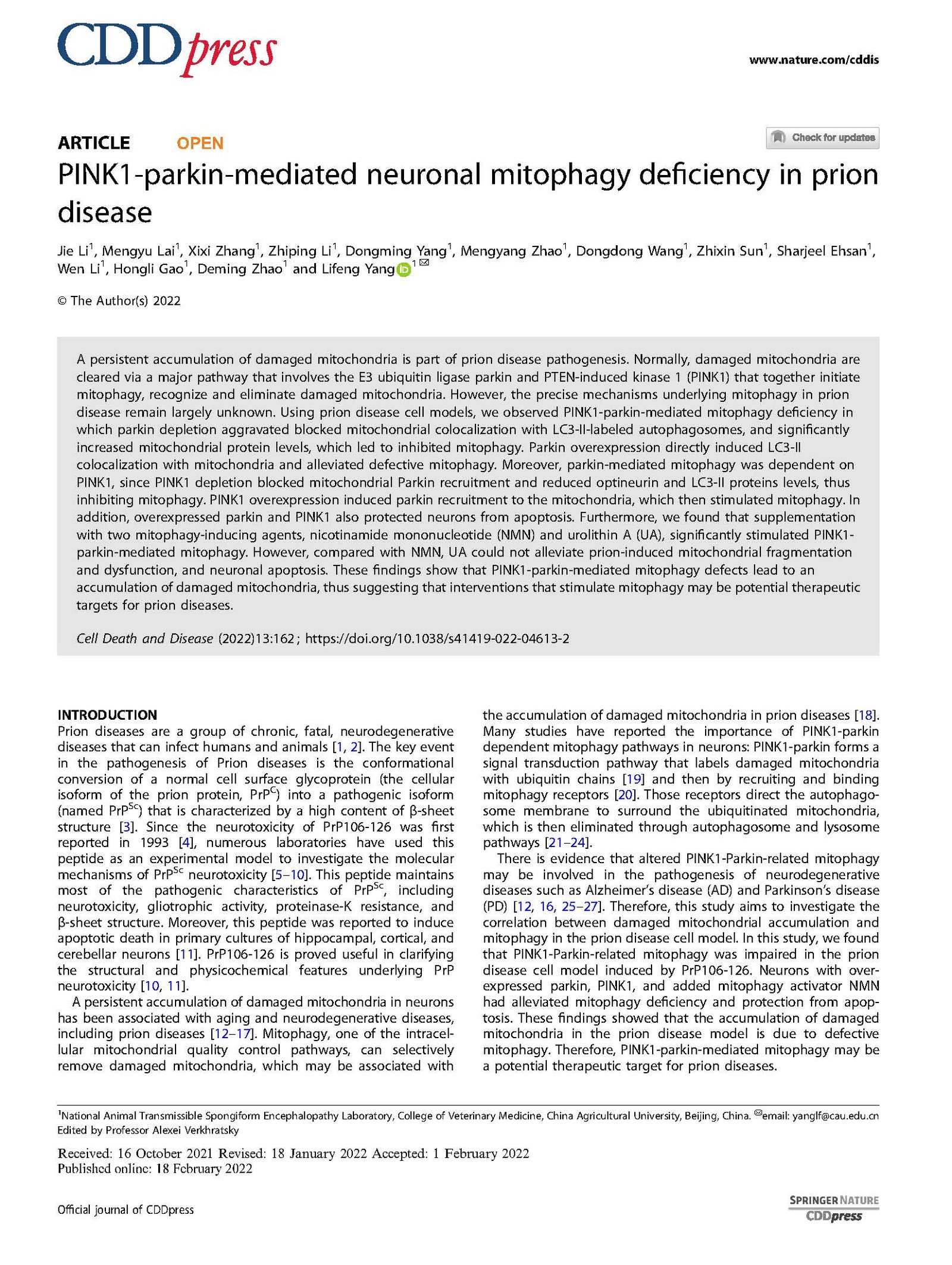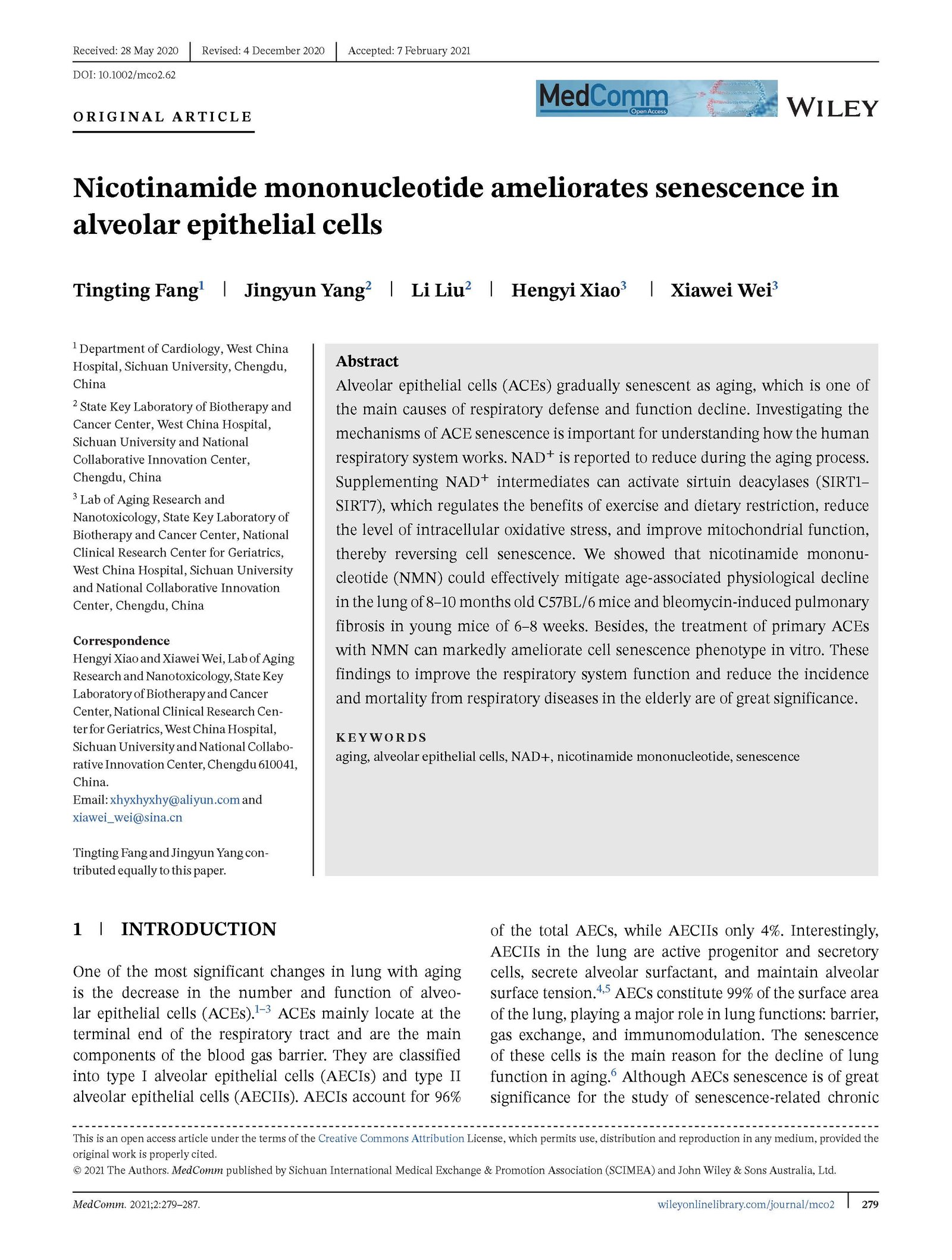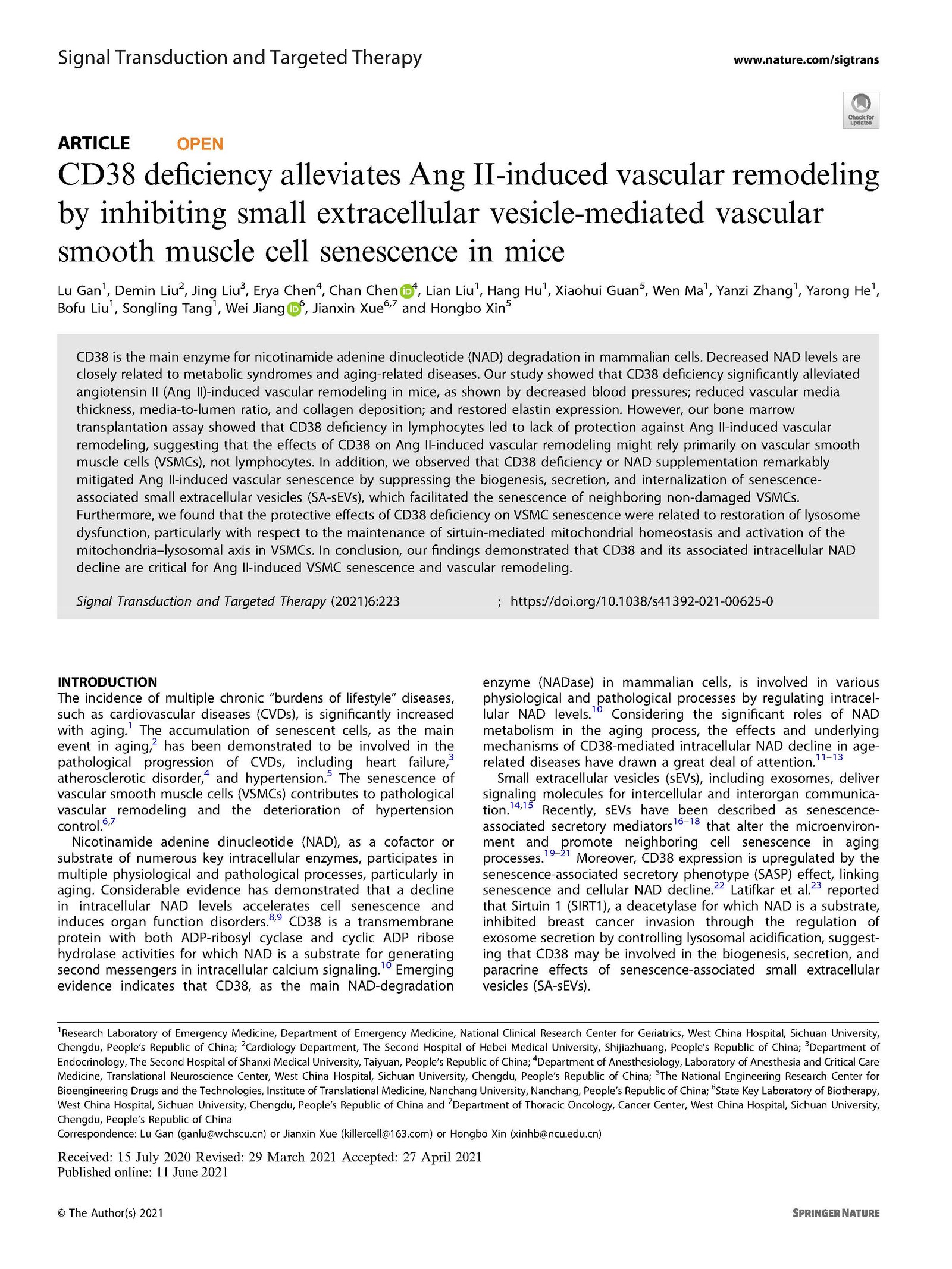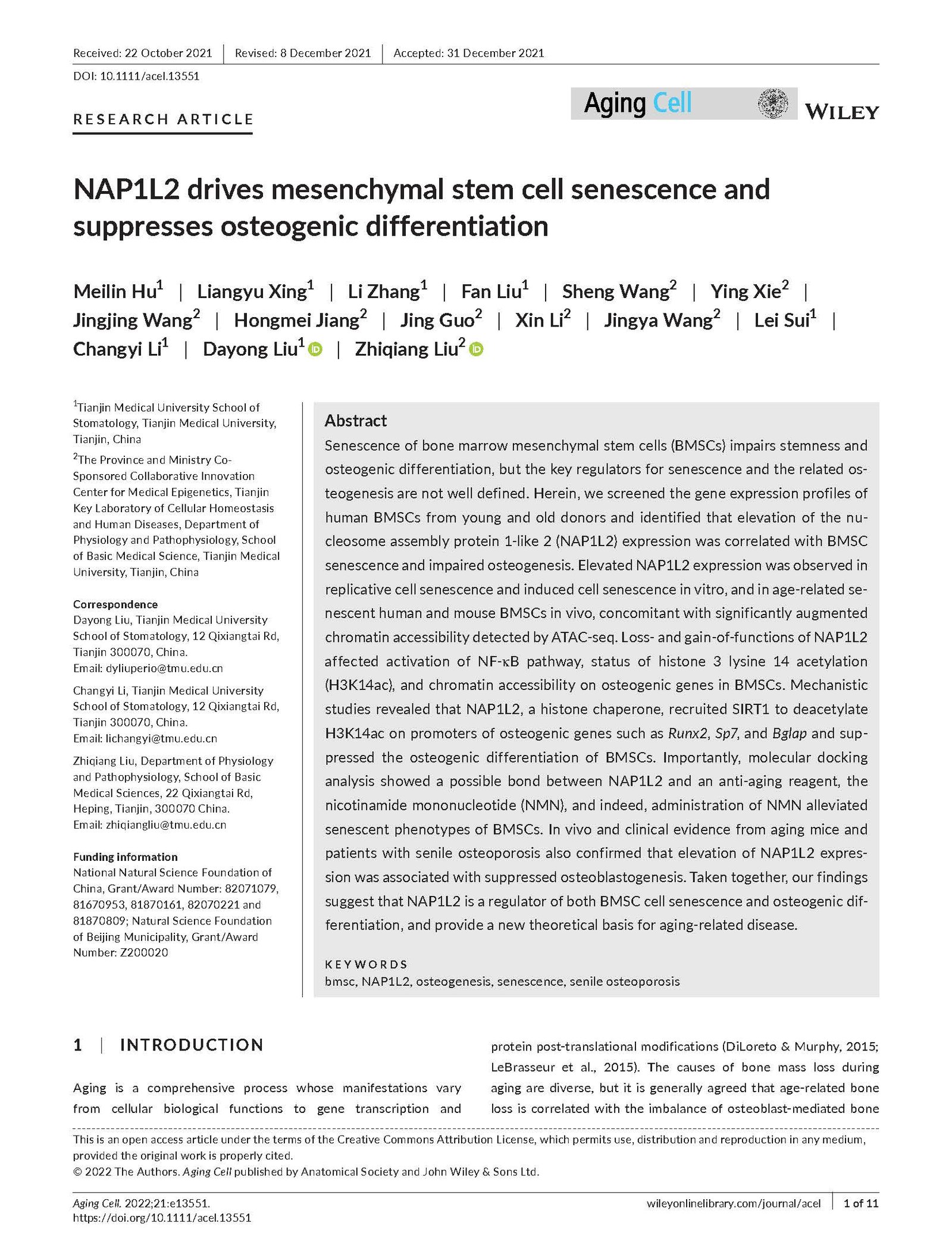NMN Improves Mouse Heart Dysfunction Caused by Scarring

Nicotinamide mononucleotide attenuates isoproterenol-induced cardiac fibrosis by regulating oxidative stress and Smad3 acetylation.
Abstract: Aims Cardiac fibrosis is a pathological hallmark of progressive heart diseases currently lacking effective treatment. Nicotinamide mononucleotide (NMN), a member of the vitamin B3 family, is a defined biosynthetic precursor of nicotinamide adenine dinucleotide (NAD⁺). Its beneficial effects on cardiac diseases are known, but its effects on cardiac fibrosis and the underlying mechanism remain unclear. We aimed to elucidate the protective effect of NMN against cardiac fibrosis and its underlying mechanisms of action. Materials and methods Cardiac fibrosis was induced by isoproterenol (ISO) in mice. NMN was administered by intraperitoneal injection. In vitro, cardiac fibroblasts (CFs) were stimulated by transforming growth factor-beta (TGF-β) with or without NMN and sirtinol, a SIRT1 inhibitor. Levels of cardiac fibrosis, NAD⁺/SIRT1 alteration, oxidative stress, and Smad3 acetylation were evaluated by real-time polymerase chain reaction, western blots, immunohistochemistry staining, immunoprecipitation, and assay kits. Key findings ISO treatment induced cardiac dysfunction, fibrosis, and hypertrophy in vivo, whereas NMN alleviated these changes. Additionally, NMN suppressed CFs activation stimulated by TGF-β in vitro. Mechanistically, NMN restored the NAD⁺/SIRT1 axis and inhibited the oxidative stress and Smad3 acetylation induced by ISO or TGF-β. However, the protective effects of NMN were partly antagonized by sirtinol in vitro. Significance NMN could attenuate cardiac fibrosis in vivo and fibroblast activation in vitro by suppressing oxidative stress and Smad3 acetylation in a NAD⁺/SIRT1-dependent manner.
Source: Life Sci. 2021 Mar 3;274:119299. doi: 10.1016/j.lfs.2021.119299. Epub ahead of print. PMID: 33675899.





